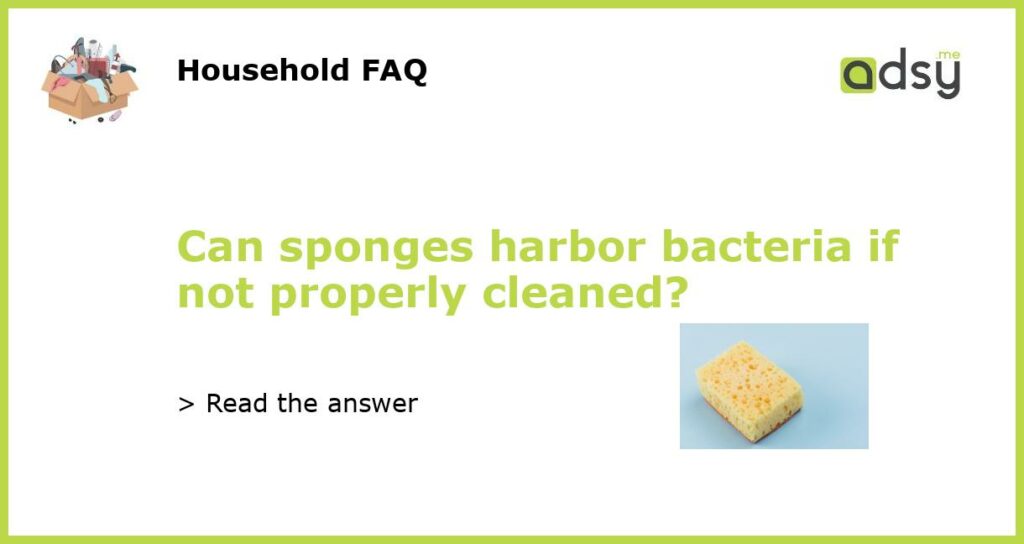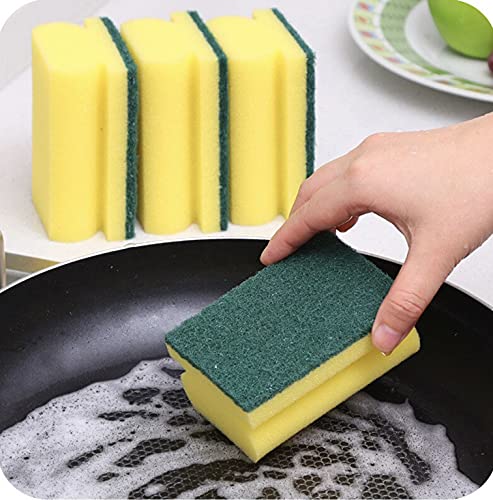Sponges Can Harbor Bacteria if Not Properly Cleaned
Sponges are a common household item used for cleaning dishes, countertops, and various surfaces. However, if not properly maintained and cleaned, sponges can become breeding grounds for bacteria. The moist and porous nature of sponges provides an ideal environment for bacteria to thrive and multiply. It is crucial to understand the potential risks associated with using a dirty sponge and how to properly clean and sanitize it to prevent the spread of harmful bacteria.
The Role of Bacteria in Dirty Sponges
Bacteria are microscopic organisms that can cause infections and illnesses. When not thoroughly cleaned, sponges may accumulate and retain bacteria from the surfaces they have come into contact with. This may include food remnants, oils, and other debris, providing a nutrient-rich environment for bacterial growth.
Studies have shown that sponges can contain a variety of bacteria, including potentially harmful ones such as E. coli, Salmonella, and Staphylococcus aureus. These bacteria can cause gastrointestinal infections, food poisoning, skin infections, and other illnesses if not properly eliminated.
Proper Cleaning Techniques to Prevent Bacterial Contamination
To minimize the risk of bacteria buildup in sponges, it is essential to follow proper cleaning techniques. Here are some guidelines to keep in mind:
- Rinse after each use: After using the sponge, rinse it thoroughly under hot water to remove any food particles or residue.
- Use soap or detergent: Apply a small amount of antibacterial soap or dish detergent to the sponge and work it into a lather. This will help break down grease and kill bacteria.
- Scrub vigorously: Use a scrub brush or your hands to scrub the sponge thoroughly, paying attention to all areas, including the sponge’s crevices and edges.
- Sanitize regularly: Once or twice a week, sanitize the sponge by soaking it in a mixture of bleach and water. Use one part bleach to nine parts water and let the sponge soak for at least five minutes. Rinse thoroughly afterward.
- Replace when necessary: Even with proper cleaning, sponges will eventually wear out and may develop an unpleasant odor. Consider replacing your sponge every few weeks to maintain hygiene.
Alternatives to Traditional Sponges
If you are concerned about the potential bacterial contamination of sponges, there are alternative cleaning tools available. Consider using the following options:
- Microfiber cloths: These cloths are highly absorbent and can be used for various cleaning tasks. They are reusable, easy to clean, and less likely to accumulate bacteria.
- Silicone scrubbers: Silicone scrubbers are non-porous and can be easily sanitized in the dishwasher or by boiling in water. They are durable and can effectively remove dirt and grime.
- Nylon pot scrubbers: Nylon pot scrubbers are tough on grime and can be cleaned by simply placing them in the dishwasher. They are long-lasting and less likely to harbor bacteria.
Sponges can indeed harbor bacteria if not properly cleaned. Regularly cleaning and sanitizing your sponge is crucial to minimize the risk of bacterial contamination. Follow the recommended cleaning techniques, and consider using alternative cleaning tools if you are concerned about bacteria buildup. By prioritizing cleanliness and hygiene, you can ensure a safe and healthy environment in your kitchen and other areas of your home.






